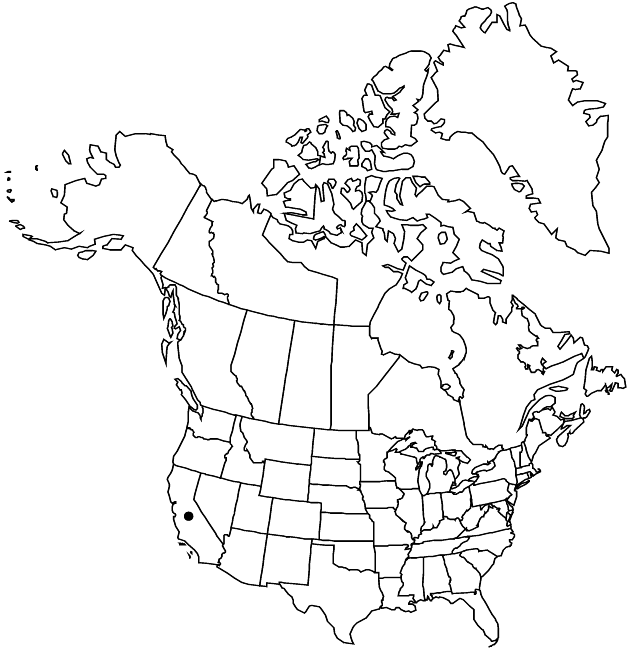Malacothrix similis
Madroño 16: 262, fig. 2c. 1962.
Annuals, 5–30+ cm. Stems 1–11, erect or ascending, branched mostly proximally, glabrous or sparsely arachnose to puberulent and glabrescent. Cauline leaves: proximal mostly lance-linear, sometimes pinnately lobed, not fleshy, ultimate margins dentate or entire, faces glabrous or sparsely arachnose to puberulent and glabrescent; distal reduced subentire. Calyculi of 8–12+ lance-deltate to lanceolate bractlets, hyaline margins 0.05–0.3 mm wide. Involucres narrowly campanulate, 6–10 × 3–6 mm. Phyllaries 18–21+ in ± 2 series, lance-linear to linear, ± equal, hyaline margins 0.05–0.2 mm wide, faces glabrous. Receptacles not bristly. Florets 32–73: corollas yellow, 4–9 mm; outer ligules exserted 2–4 mm. Cypselae ± cylindro-fusiform to prismatic, 1.4–1.7 mm, ribs extending to apices, 5 more prominent than others; pappi persistent, of ca. 18, irregular needlelike teeth plus 1 bristle. Pollen mostly 4-porate (mean diam. 30 µm). 2n = 28.
Phenology: Flowering Apr–May.
Habitat: Coastal plains, beaches, dunes
Elevation: 0–40 m
Distribution

Calif., Mexico (Baja California).
Discussion
Of conservation concern.
Malacothrix similis has been collected on Santa Cruz Island (in 1888) and at Hueneme Beach (in 1925).
Selected References
None.